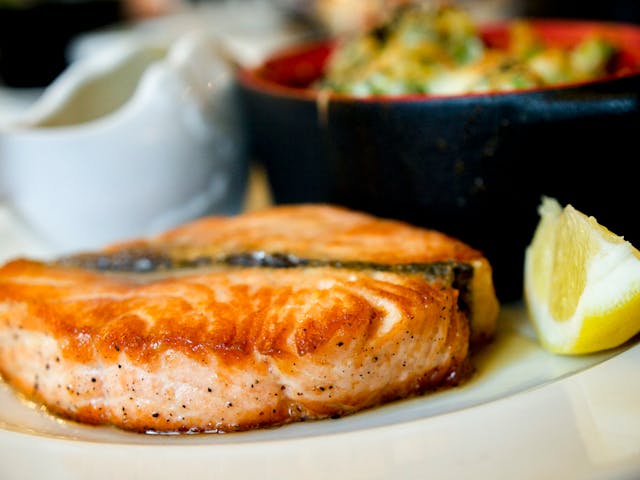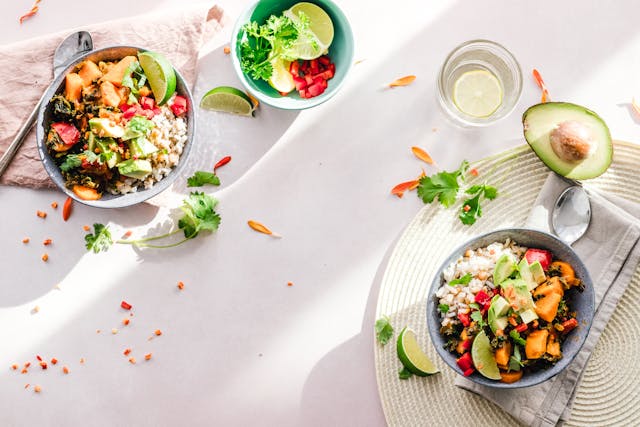Are you curious about whether the keto diet can fit within your budget? You’re not alone. With the rising popularity of this low-carb, high-fat diet, many people are wondering if it’s possible to stick to it without breaking the bank. This article aims to shed light on the affordability of the keto diet and help you make informed decisions about your eating habits.
How does the Keto Diet work?
The ketogenic diet, or keto diet for short, is a low-carb, high-fat eating plan that has gained popularity in recent years. By drastically reducing your carbohydrate intake and increasing your fat consumption, the keto diet shifts your body into a state of ketosis – a metabolic state where your body burns fat for fuel instead of glucose.
When you consume carbohydrates, your body converts them into glucose, which is used as the primary source of energy. However, when you restrict your carbohydrate intake and consume a higher amount of fat, your body has to find an alternative fuel source. This is where ketosis comes into play.
During ketosis, your liver begins to convert fat into ketones, which are molecules that can be used as energy by your body and brain. By relying on fat for fuel, the keto diet can lead to weight loss as your body burns stored fat. Additionally, ketones can provide a more stable and consistent source of energy, which can lead to increased mental clarity and improved physical performance.
Understanding the Benefits of a Keto Diet
Before we dive into the topic of budget-friendly keto diets, let’s first understand why so many people are embracing this lifestyle. The keto diet is known for its numerous health benefits, including weight loss, improved mental clarity, and increased energy levels.

By significantly reducing your carbohydrate intake and increasing fat consumption, your body enters a metabolic state called ketosis. In this state, your body burns fat for fuel instead of glucose, leading to weight loss and other positive changes in your overall well-being.
Keto Diet on a Budget: Myth or Reality?
Now, let’s address the common misconception that the keto diet is expensive. While it’s true that some keto-friendly foods can be pricier than their carb-laden counterparts, it’s entirely possible to follow a keto diet on a budget.
The key is to focus on whole, unprocessed foods that are both affordable and nutrient-dense. By avoiding expensive packaged keto products and opting for homemade meals, you can save money without compromising on taste or nutrition.
Tips for Saving Money on a Keto Diet
Here are some practical tips to help you save money while following a keto diet:
- Meal Planning: Plan your meals in advance to avoid impulse buying and wasting ingredients. This way, you can strategically use affordable ingredients and make the most of your budget.
- Buy in Bulk: Consider purchasing items in bulk, especially non-perishable staples like nuts, seeds, and oils. Buying in bulk can save you money in the long run and ensure you always have keto-friendly ingredients on hand.
- Freeze and Preserve: Take advantage of sales and discounts by buying in bulk and freezing or preserving excess food. This allows you to stock up on items when they are cheaper and use them later when needed.
- Utilize Leftovers: Don’t let your leftovers go to waste! Repurpose them into new meals or incorporate them into your next day’s menu. This not only saves money but also reduces food waste.
- Grow Your Own Herbs and Vegetables: Consider growing your own herbs and vegetables to reduce your grocery bill. Even if you don’t have a large garden, you can grow herbs in small pots or even on your windowsill.
Budget-Friendly Keto Meal Planning
Meal planning is a crucial aspect of following a keto diet on a budget. By carefully planning your meals and snacks, you can ensure that you stay within your financial means while enjoying delicious and nutritious food. Here are some steps to create a budget-friendly keto meal plan:
- Set Your Goals: Determine your daily calorie and macronutrient requirements based on your weight, activity level, and health goals. This will help you structure your meals accordingly.
- Focus on Whole Foods: Base your meals around whole, unprocessed foods such as meat, fish, poultry, eggs, non-starchy vegetables, and healthy fats. These ingredients are generally more affordable and provide essential nutrients.
- Use Affordable Proteins: Opt for affordable protein sources like canned tuna, chicken thighs, ground beef, and eggs. These options are often more budget-friendly compared to pricier cuts of meat.
- Embrace Frozen and Canned Foods: Frozen vegetables and canned goods such as tomatoes, beans, and fish are cost-effective alternatives to fresh produce. They have a longer shelf life and can be just as nutritious.
- Make Use of Staples: Incorporate budget-friendly staples like cauliflower, cabbage, spinach, and broccoli in your recipes. These vegetables are versatile, nutrient-dense, and often more affordable.
- Plan for Batch Cooking: Prepare larger batches of meals and freeze individual portions. This will save you time and money, as you can easily reheat these meals when you’re short on time or don’t feel like cooking.
Foods to Eat on a Keto Diet
When following a keto diet, it’s important to focus on consuming foods that are low in carbohydrates and high in healthy fats. Some examples of foods that are keto-friendly include:
- Meat and poultry: Beef, chicken, turkey, and other lean meats are excellent sources of protein and healthy fats.
- Fish and seafood: Salmon, sardines, mackerel, and other fatty fish are rich in omega-3 fatty acids and make great keto options.
- Eggs: Eggs are a staple on the keto diet as they are low in carbs and high in protein.
- Healthy fats: Avocado, olive oil, coconut oil, and butter are all great sources of healthy fats.
- Low-carb vegetables: Leafy greens, broccoli, cauliflower, and zucchini are low in carbs and high in nutrients.
- Nuts and seeds: Almonds, walnuts, chia seeds, and flaxseeds are all keto-friendly snacks.
- Full-fat dairy: Cheese, yogurt, and heavy cream can be enjoyed in moderation on the keto diet.
Foods to avoid on a Keto Diet
While there are many delicious foods you can enjoy on a keto diet, there are also some foods you should avoid. Here are a few examples of foods that are not keto-friendly:
- Grains and starches: Wheat, rice, pasta, bread, and other grains are high in carbohydrates and should be avoided.
- Sugary foods: Candy, soda, juice, and other sugary treats are not allowed on the keto diet.
- Fruit: While fruit is generally considered healthy, it contains natural sugars and should be limited on a keto diet.
- Legumes: Beans, lentils, and chickpeas are high in carbs and not suitable for the keto diet.
- Processed foods: Processed snacks, packaged meals, and fast food should be avoided as they often contain hidden sugars and unhealthy fats.
Common misconceptions about the Keto Diet
Despite its popularity, the keto diet is not without its misconceptions. Here are a few common myths and the truth behind them:
Myth 1: The keto diet is all about eating bacon and butter.
While the keto diet does emphasize consuming healthy fats, it’s important to prioritize quality sources of fat such as avocados, olive oil, and nuts. Eating excessive amounts of processed meats and unhealthy fats can negate the potential health benefits of the diet.
Myth 2: The keto diet is not sustainable in the long term.
While the keto diet can be challenging to maintain in the beginning, many people find that it becomes easier over time. With careful planning and a focus on variety, it is possible to follow a keto diet in the long term.
Myth 3: The keto diet is only for weight loss.
While weight loss is a common goal for individuals following the keto diet, it also offers other health benefits such as improved blood sugar control and increased energy levels.
Tips for starting a Keto Diet
If you’re considering starting a keto diet, here are a few tips to help you get started:
- Do your research: Educate yourself about the keto diet and the foods you can and cannot eat. Understanding the principles behind the diet will make it easier to follow.
- Plan your meals: Take the time to plan your meals and snacks in advance. This will help you stay on track and ensure that you have keto-friendly options available.
- Stay hydrated: Drinking plenty of water is important on any diet, but it’s especially crucial on a keto diet. Aim to drink at least eight glasses of water per day to stay hydrated.
- Monitor your macros: Tracking your macronutrient intake can help ensure that you are staying within the appropriate ranges for the keto diet. There are several apps and websites available that can help you track your macros.
- Be patient: It may take some time for your body to adjust to the keto diet. Be patient with yourself and give your body time to adapt to the new eating plan.
Potential side effects of the Keto Diet
While the keto diet can have many benefits, it can also have some potential side effects. These can vary from person to person, but some common side effects include:
- Keto flu: Many people experience flu-like symptoms in the first few days or weeks of starting a keto diet. These symptoms can include fatigue, headaches, nausea, and irritability. They typically subside as your body adjusts to the diet.
- Digestive issues: Some individuals may experience digestive issues such as constipation or diarrhea when starting a keto diet. This can be alleviated by ensuring you are getting enough fiber and staying hydrated.
- Reduced physical performance: During the initial transition period, you may notice a decrease in your physical performance. This is because your body is adapting to using fat as its primary fuel source. However, once your body becomes keto-adapted, many people report increased endurance and improved performance.
Keto Diet Recipes and Meal Plans
One of the keys to successfully following a keto diet is having a variety of delicious and satisfying recipes at your disposal. Here are a few examples of keto-friendly meals and snacks:
- Breakfast: Avocado and bacon omelet, spinach and feta scrambled eggs, or keto-friendly smoothies made with almond milk, spinach, and nut butter.
- Lunch: Grilled chicken Caesar salad, zucchini noodles with pesto and grilled shrimp, or a lettuce wrap filled with turkey and avocado.
- Dinner: Baked salmon with roasted asparagus, cauliflower crust pizza topped with veggies and cheese, or grilled steak with a side of sautéed mushrooms and spinach.
- Snacks: Cheese and salami roll-ups, celery sticks with almond butter, or a handful of mixed nuts.
Affordable Keto Ingredients and Substitutions
When following a budget-friendly keto diet, it’s essential to choose affordable ingredients and make smart substitutions when necessary. Here are some cost-effective options to include in your keto pantry:
- Eggs: Eggs are not only an excellent source of protein but also an affordable staple for any keto diet. They can be used in various dishes, from breakfast scrambles to homemade mayonnaise.
- Canned Fish: Canned fish like tuna and sardines are affordable sources of omega-3 fatty acids and protein. They can be used in salads, casseroles, or simply enjoyed on a bed of greens.
- Ground Meat: Ground meat, such as ground beef or turkey, is often more affordable than steaks or roasts. It can be used to create a variety of keto-friendly dishes like meatballs, burgers, or chili.
- Frozen Vegetables: Frozen vegetables are a budget-friendly alternative to fresh produce. They retain their nutritional value and are convenient to have on hand for quick and easy meal preparation.
- Cauliflower: Cauliflower is a versatile and low-cost vegetable that can be used as a substitute for rice, mashed potatoes, or even pizza crust. It’s an excellent option for adding bulk to your meals without breaking the bank.
Grocery Shopping on a Budget for Keto
Smart grocery shopping is the key to maintaining a budget-friendly keto diet. Here are some tips to help you save money while shopping for keto-friendly ingredients:
- Shop Seasonally: Purchase fruits and vegetables that are in season, as they are often more affordable and fresher. You can also consider visiting local farmers’ markets for better deals on produce.
- Compare Prices: Compare prices across different stores or online platforms to find the best deals on keto-friendly ingredients. Don’t be afraid to try out different brands or generic options to save money.
- Use Coupons and Loyalty Programs: Take advantage of coupons, discounts, and loyalty programs offered by grocery stores. These can significantly reduce your overall grocery bill.
- Avoid Pre-Packaged Products: Pre-packaged keto products, such as snacks and desserts, tend to be more expensive. Instead, opt for homemade alternatives that are not only cheaper but also healthier.
- Buy in Bulk: Consider purchasing non-perishable keto ingredients in bulk to save money. Staples like nuts, seeds, oils, and spices have a long shelf life and can be stored for an extended period.
Cooking Keto on a Budget: Kitchen Tools and Appliances
When it comes to cooking keto meals on a budget, having the right kitchen tools and appliances can make a significant difference. Here are some budget-friendly essentials to consider:

- Instant Pot or Slow Cooker: These versatile appliances can help you prepare budget-friendly keto meals with minimal effort. They are perfect for cooking cheaper cuts of meat, making bone broth, or creating flavorful stews.
- Food Processor or Blender: A food processor or blender is essential for making homemade sauces, dips, and dressings. It allows you to save money by avoiding store-bought options that can be more expensive.
- Non-Stick Pans: Investing in a few non-stick pans can save you money on cooking oils and prevent food from sticking, reducing waste. Look for affordable options that have good reviews and are durable.
- Sharp Knives: A set of sharp knives is a must-have for any kitchen. They make meal preparation easier and safer, allowing you to efficiently cut through tough vegetables and meats without wasting ingredients.
Tracking Your Expenses on a Keto Diet
To maintain a budget-friendly keto lifestyle, it’s crucial to track your expenses and make adjustments as needed. Here are some tips for effectively managing your keto diet expenses:
- Keep a Food Diary: Record your daily food expenses to get an accurate picture of your keto diet costs. This will help you identify areas where you can cut back and make more cost-effective choices.
- Set a Budget: Determine a monthly or weekly budget for your keto diet and stick to it. This will help you stay accountable and ensure that you’re not overspending on unnecessary items.
- Review and Adjust: Regularly review your food diary and budget to identify areas where you can make improvements. Look for opportunities to reduce costs without compromising on the quality of your meals.
- Explore Money-Saving Apps: Consider using money-saving apps or websites that offer discounts, cashback, or coupons for grocery purchases. These can help you save money on your keto shopping.
Conclusion: Achieving a Budget-Friendly Keto Lifestyle
In conclusion, following a keto diet doesn’t have to break the bank. With careful planning, smart shopping, and creative meal preparation, it’s entirely possible to enjoy the benefits of a keto lifestyle while staying within your budget.
By focusing on whole, unprocessed foods and making cost-effective ingredient choices, you can make the keto diet fit your financial means. Remember, achieving a budget-friendly keto lifestyle is all about being resourceful and finding creative ways to save money without compromising on your health and well-being. So, go ahead and embrace the keto diet without worrying about your wallet.
